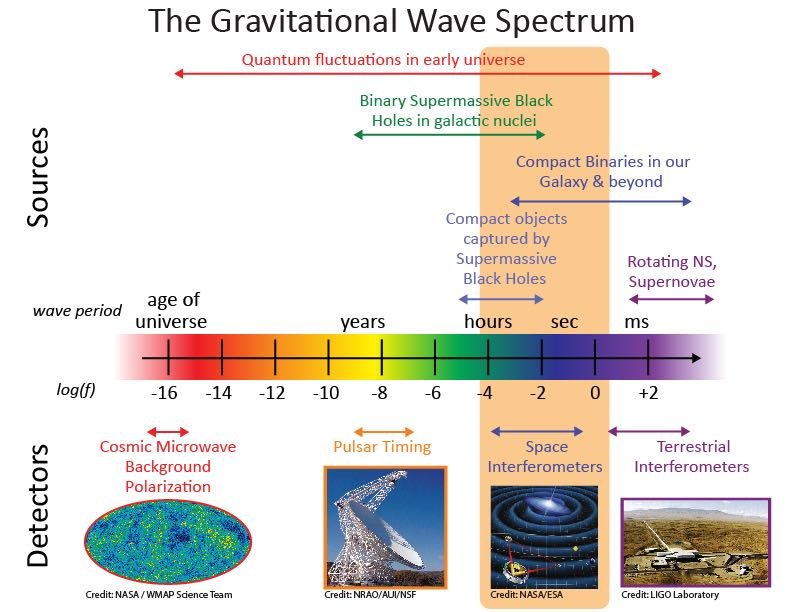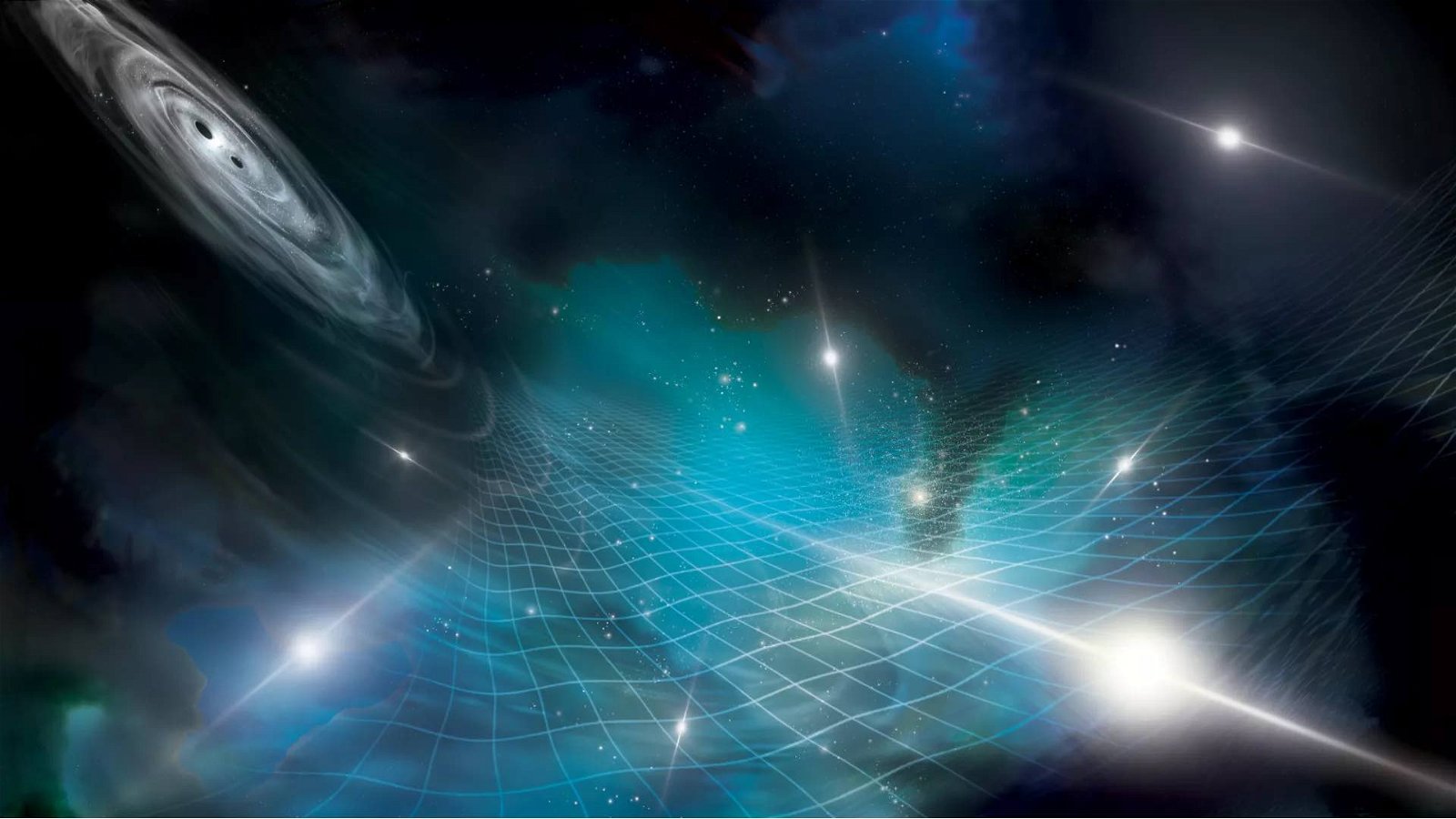When Albert Einstein introduced his theory of general relativity in 1915, it completely changed how we understood the physical world. Gravity, an immutable background force as described by Newton, became something that emerged out of the interaction between mass and what Einstein called spacetime, the stage where the drama of the Universe played out.
General relativity yielded a number of predictions, including how the Sun would bend light around its massive gravitational field. Most of relativity’s predictions were eventually verified with detailed observations, but it wasn’t until 2017, over a hundred years after Einstein published his work, that physicists were able to eventually confirm the existence of another physical consequence of his seminal theory: gravitational waves.
At the Laser Interferometer Gravitational-Wave Observatory (LIGO), literal ripples in the fabric of spacetime have been detected from the most violent of interstellar events, which involve the merging of black holes and hyper-dense neutron stars.


Since their detection at LIGO, our growing body of data on gravitational waves has helped scientists conduct more rigorous tests for general relativity, devise a novel method for measuring the cosmological constant (the latent energy in the Universe thought to be responsible for its ongoing expansion), and better understand the processes that are responsible for the creation and dispersal of the heavy elements.
And while gravitational waves are helping to advance science in a number of areas, it has been suggested that studying them may also help us answer one of the deepest questions in the collective human psyche: are we alone in the universe?
Gravitational Waves and the Search for Extraterrestrial Intelligence
In the years since LIGO announced the detection of gravitational waves, a number of papers have been published which have speculated about the possibility of there being clues embedded in gravitational wave data that point to the existence of technologically advanced civilizations operating in our galaxy or even further afield.
In a 2020 paper, physicist Marek Abramowicz from the University of Gothenburg and his colleagues discussed the possibility of a technologically advanced species harvesting energy from the supermassive black hole Sagittarius A* at the center of the Milky Way. A civilization with sufficient technological know-how, they argue, could use the black hole for energy extraction and communication. The authors show that if a Jupiter-mass structure were in the innermost stable circular orbit around the black hole, then the probe would emit an unambiguous artificial gravitational wave signal that could be observed by LISA-type gravitational wave detectors.
LISA, or the Laser Interferometer Space Antenna, is a space-based gravitational wave detector that is set to be built by NASA over the next decade. It will be a more sensitive instrument than LIGO, providing researchers with a more detailed picture of the gravitational waves that happen to pass by Earth.
Why build detectors in space? Gravitational waves exist at extremely low frequencies, which means antennas need to be very far apart to pick them up. Future space-based detectors like LISA will be able to provide data that significantly widens the scope of objects and events that we could identify through their emitted gravitational waves. A lunar-based gravitational wave detector was even suggested in 2021 by physicists Karan Jani from Vanderbilt University and Avi Loeb from Harvard University for its improved capabilities at analyzing waves in the gravitational wave spectrum.


More recently, an international team of researchers published a paper that details the ability of LIGO to detect the gravitational wave effects of what they call Rapid and/or Massive Accelerating spacecraft (RAMAcraft). As current gravitational wave detectors like LIGO are capable of receiving signals from dramatic cosmological events, the authors propose using such detectors to identify signals that may be caused by mega-technology from an intelligent space-faring civilization. RAMAcraft refers specifically to Jupiter-mass pieces of technology with changes in velocity within 10% of the speed of light.
Currently, such technology only exists as a distant dream of the human species. However, a range of speculative futuristic technologies discussed by scientists and engineers have involved objects moving at such speeds, and being generally of a similar size, which include warp drives and Dyson spheres. Given the vast number of habitable worlds in our galaxy alone (estimated to be in the hundreds of millions), the possibility of life being a common phenomenon in the Universe, and the chance that it could evolve to a point of high technological intelligence, all make it seem reasonable to at least search for signs of a Kardashev level 2-3 civilization lurking in our cosmic neck of the woods.
an Innovative New Approach to An Existing Idea
Scientists have been analyzing the sky for decades in the hopes of intercepting radio waves that could possibly indicate the existence of a technologically advanced alien civilization, mainly through the efforts of the SETI Institute. However, it is possible, as the authors of this paper suggest, that signs of intelligent activity may be hidden in gravitational waves rather than signals within the relevant bands of the electromagnetic spectrum. The character of these signals, they argue, should distinguish them from other naturally occurring phenomena in interstellar space.
“As far as we know in terms of our current understanding of general relativity, if there is an intelligent civilization out there moving large objects around, then there is no real way to mask those activities, and they will be broadcasted out into space for whoever is listening through gravitational waves,” says Brandon Melcher from Applied Physics, who contributed to the paper.
And if these hypothetical crafts move in ways that we might expect, such as accelerating and slowing down at rapid speeds, then those activities will give off gravitational wave signals that will make them distinguishable from other naturally occurring events.
“The objects considered in the paper accelerate in a straight line. The signal produced by such an object is not particularly likely to be mimicked by a naturally-occurring source, but care must be taken to differentiate the two cases nonetheless. Though suffice to say, an object accelerating in a particularly unusual manner should be differentiable from a natural source,” says Luke Sellers, who was a co-author of the paper, and who works at the Advanced Propulsion Laboratory at Applied Physics.
Over the coming years, a number of new gravitational wave observatories will become operational such as LISA (already mentioned), Decigo, Cosmic Explorer, and the Einstein Telescope. One significant advantage of what the researchers are proposing is that this approach is piggybacking on existing interest and a growing field of gravitational wave astronomy. The plans are already in place to build a new generation of gravitational wave detectors, and the data will eventually become available. It will simply be a means of combing through the data to look for the types of signals that RAMAcraft might give off.
“All of these facilities will enhance the gravitational wave SETI research as they will simultaneously gather data from all possible sources, encompassing potential signals from RAMACraft. The challenge lies in our ability to adequately analyze and interpret the accumulated data!” says physicist Alexey Bobrick, a co-author of the paper.
An interesting consideration may be that as civilizations get more advanced, different types of communication, such as those of the electromagnetic spectrum, become obsolete, and that the gravitational wave spectrum might be a promising medium to search for the communication of an advanced species. Gravitational wave signals diminish less rapidly over large distances (as compared to electromagnetic waves) and cannot be blocked or shielded. However, the authors think analyzing gravitational waves should be coupled with current methods that search the electromagnetic spectrum and other optical techniques.
“We are not saying that this should replace current SETI efforts that are based on radio waves; rather, it’s another tool that we can include in our collective search arsenal,” says Sellers.
“It is important to use multiple tools in a detection pipeline because we need several lines of evidence before we make big claims such as something being a piece of alien technology,” he adds.
Dr. Vishal Gajjar, an astronomer at the SETI Institute who designs algorithms that analyze radio waves for signs of technology and who is a project scientist for the Breakthrough Listen project, echoes Sellers’ views.


“I would definitely advocate searching gravitational waves for signs of any kind of intelligent technology, because why not? A decade ago we didn’t know they existed, but now we know of a new medium in which information can travel across interstellar space relatively unimpeded,” says Gajjar.
Gajjar makes an interesting point about the types of signals that SETI keeps an eye out for. These are usually broken up into intentional signals meant for other intergalactic species, a sort of ‘we are here, come find us’ beacon, and then unintentional signals that are the result of their own activities, of which we might be able to eavesdrop on. Gajjar thinks signals on the electromagnetic spectrum are far more suited to beacon-type signals, whereas if we detect gravitational waves with strange characteristics, this is more likely to be some sort of unintentional signal or leakage from what they are doing already.
“If you really want to make yourself known, to announce that you exist to the Universe, why would you use gravitational waves? You can easily use radio waves or light waves to tell the rest of the galaxy, ‘We are here!’ That would be much simpler and more easily detected than moving a planet just to get attention,” he says.
Gajjar explains that SETI works with the principle that everything should be done with the minimum expense of total energy, and when it comes to gravitational waves, in order for us to detect something that we think is a sign of something intelligent, the amount of energy that needs to be spent is huge, i.e., you need to move a Jupiter mass object with high velocity in order to produce a signal that you can detect. On the other hand, electromagnetic radio waves are much cheaper to produce; you can generate them with a fraction of the energy you would spend even for higher energy waves like gamma waves.
Beacons, Gajjar explains, should have the simplest characteristics, and he thinks any civilizations who create such a beacon would likely put all of their energy into one frequency because most of the signals we use for communications are wide-band as they have information content. The benefit of that is that those kinds of signals are easily identifiable, and they can be easily separated from anything that is happening in nature because nature doesn’t produce signals that are highly concentrated in frequency.
“If a signal is only a few Hz wide, it’s a good indication it was produced by technology,” he says.
“If we ever detect a signal through gravitational waves that indicates technological intelligence, it’s more likely to be a leakage type signal, where some massive structure is being moved,” Gajjar adds.
The types of beacon signals that Gajjar is talking about, though, could be much rarer than leakage signals. Civilizations, as they start to enter space, might not want to broadcast their existence to anyone who is listening in case they attract the attention of someone with a nefarious agenda. The issue with leakage signals is that we have no real idea of what it might look like. Until you know how to decode the information content from a signal, it can just look like a lot of noise.
Gajjar seems optimistic that gravitational waves will start to play a larger role for SETI in general, and welcomes the methodology put forward by the authors of the RAMAcraft paper. We are yet to have the ‘Wow’ signal for gravitational waves, but as a field of science that is in its relative infancy, we can expect detectors to get more sensitive, opening up possibilities to gather data on a wider range of gravity-distorting events in the universe, some of which are likely to lie outside the bounds of our current knowledge.
Could some of these events be caused by high-tech aliens? Extraordinary claims require extraordinary evidence, and now it seems scientists might have a new way of generating evidence of that calibur.
Conor Feehly is an Auckland-based freelance science writer. He holds a masters graduate from the Centre for Science Communication at Otago University.

